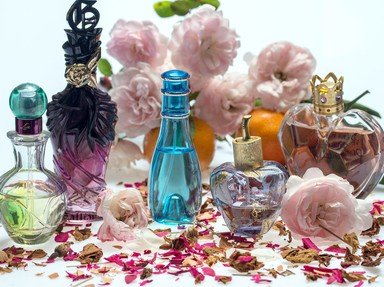Quiz Answer Key and Fun Facts
1. The most beloved of ornamental flowers, the rose is also a major ingredient in perfumery. What Eastern European country on the Black Sea is one of the biggest producers of rose essential oil?
2. A highly prized perfume note, frequently featured in "oriental" fragrances, is named after what gemstone of organic origin - which, however, does not really have much of a smell?
3. Citrus trees and their fruits are rich in fragrant essential oils. Which of these is a citrus fruit extensively used in perfumery, and also known as a flavouring for tea?
4. Though their use is being phased out in modern perfumery, raw materials of animal origin were extensively employed in the past. Which popular perfume note is extracted from the glands of a small deer species?
5. Vetiver is a key component of dry, woody fragrances. Similar to ginger and turmeric, it comes from what part of the vetiver plant?
6. Resinous materials extracted from trees and other plants are among the oldest of perfumery ingredients. One such is olibanum, a resin more commonly known by what "kingly" name?
7. Many perfumes classified as "fougère" or "chypre" use extract of oakmoss as a key ingredient. What kind of organism is oakmoss?
8. Such is the importance of white flowers in perfumery that they form their own subcategory, that of "white floral" fragrances. Which of the following is NOT considered a white flower for perfumery purposes (though it also comes in a white variety)?
9. The heady scent of sandalwood is associated with luxury and faraway lands. The very best quality of sandalwood oil comes from Mysore - which is part of what large Asian country?
10. Spices are not only for the kitchen! All of these spices are used in perfumery, but which one of them comes from the seed pods of a beautiful flower?
Source: Author
LadyNym
This quiz was reviewed by FunTrivia editor
kyleisalive before going online.
Any errors found in FunTrivia content are routinely corrected through our feedback system.
